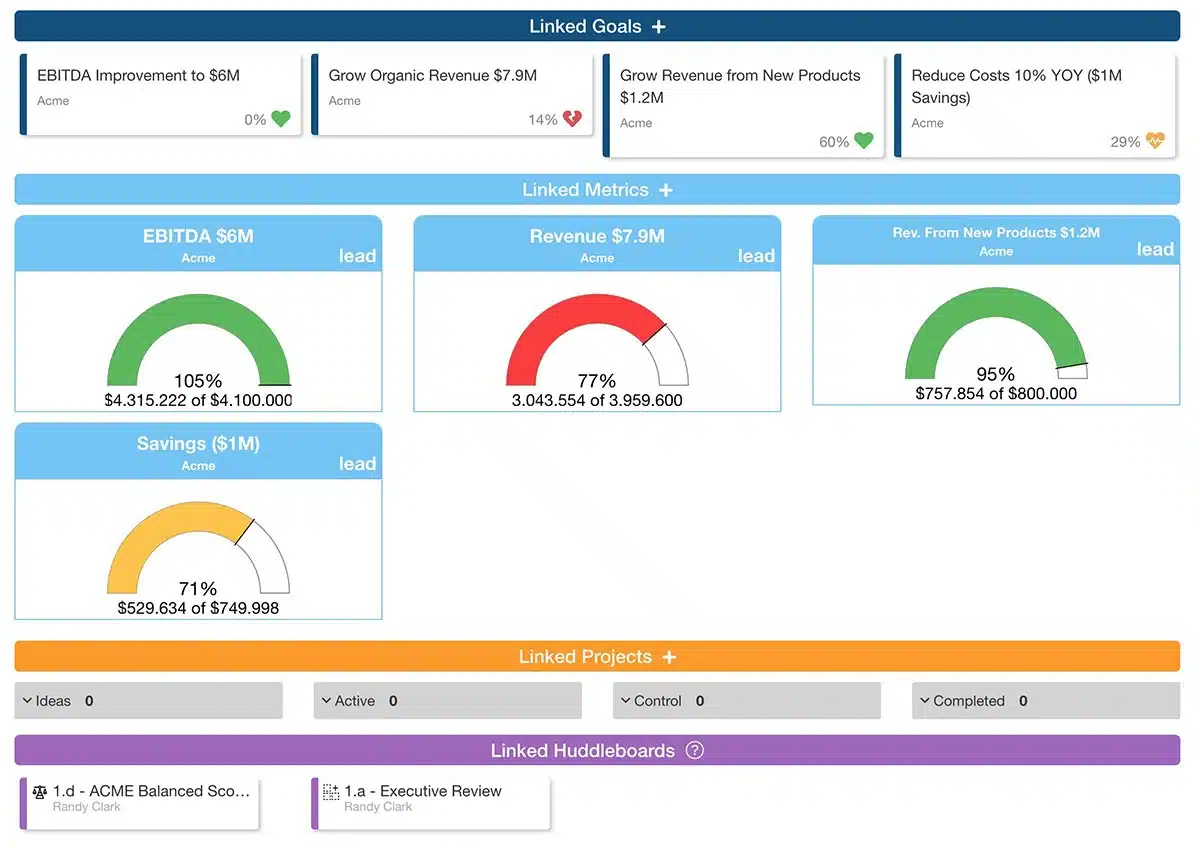Sometimes incremental progress just isn’t enough. We crave breakthroughs, transformative leaps that redefine what’s possible. That’s where the BHAG comes in – a Big Hairy Audacious Goal. It’s not your typical target; it’s a bold, inspiring vision that stretches an organization beyond its current limits and ignites a passion for achieving the seemingly impossible. Let’s explore what a BHAG is all about and why it’s such a powerful strategic planning tool for driving extraordinary results.
Main Takeaways From This Article:
- BHAGs are Transformative Long-Term Visions: Unlike typical goals, BHAGs are bold, inspiring, and long-term (10-30 years), designed to push organizations beyond their current capabilities and drive significant, transformative growth.
- They Inspire and Unify Organizations: BHAGs serve as a powerful unifying force, aligning diverse teams around a shared, compelling purpose, fostering innovation, and building resilience.
- BHAGs Differentiate from SMART Goals: While SMART goals focus on tactical execution and incremental improvement, BHAGs transcend these by setting audacious visions that compel organizations to think creatively and strategically, leading to breakthroughs.
- Effective BHAGs Require Careful Planning and Execution: Creating a successful BHAG involves identifying a clear vision, aligning it with core values, balancing ambition with realism, and ensuring clear communication throughout the organization.
- Overcoming Challenges is Key to BHAG Success: Setting overly ambitious goals, poor communication, misalignment with resources, and neglecting to track progress are common pitfalls.
What is a BHAG?
A BHAG, or Big Hairy Audacious Goal, is a bold, long-term, qualitative goal that challenges organizations to strive for greatness. Coined by Jim Collins and Jerry Porras in their book Built to Last, BHAGs serve as a powerful mechanism to inspire visionary growth by setting a compelling, ambitious target that stretches beyond current capabilities.
Key Characteristics of a BHAG
BHAGs are bold and audacious, requiring significant effort and innovation to achieve. They are clear and easily understood, providing a unified direction for the entire organization. These long-term goals, typically spanning 10-30 years, require sustained focus and commitment. While challenging, a BHAG should be ultimately achievable with dedication and strategic execution, motivating teams and shaping a long-term strategic vision.
Why Is a BHAG Important in Strategic Planning?
A Big Hairy Audacious Goal (BHAG) is a long-term, ambitious goal that serves as a guiding star for an organization. It’s a powerful tool in strategic planning for the purposes of:
Inspiring Organizational Vision
A BHAG serves as a powerful unifying force, aligning diverse teams around a shared, compelling purpose. It paints a vivid picture of a desirable future, inspiring action and ambition throughout the organization. This shared vision fosters a culture of innovation as teams seek creative solutions to achieve the audacious goal. Furthermore, a BHAG cultivates resilience, enabling the organization to weather challenges and setbacks with a renewed sense of purpose and long-term perspective. Ultimately, it transforms individual efforts into a collective pursuit of something extraordinary.
Differentiation From Traditional Goals
While SMART goals focus on specific, measurable, achievable, relevant, and time-bound objectives, BHAGs transcend incremental improvement by setting audacious, long-term visions. SMART goals are valuable for tactical execution, but BHAGs inspire a transformative journey, pushing organizations beyond their comfort zones. They challenge the status quo and compel teams to think creatively and strategically, leading to breakthroughs and extraordinary outcomes rather than simply optimizing current processes. A BHAG isn’t about doing things better; it’s about doing fundamentally different and more impactful things.
Examples of Famous BHAGs
Historical BHAGs
BHAGs, or Big Hairy Audacious Goals, are ambitious, long-term objectives that inspire and motivate organizations to achieve extraordinary things. NASA’s Apollo 11 mission to land a man on the moon and return him safely to Earth serves as a prime example, pushing the boundaries of human ingenuity and technological advancement. Similarly, Microsoft’s early vision of “a computer on every desk and in every home” played a pivotal role in the proliferation of personal computing. Google’s stated mission to “organize the world’s information and make it universally accessible and useful” continues to shape their innovations and impact how we interact with information. These examples illustrate how BHAGs can not only define an organization’s direction but also catalyze industry-wide transformation and inspire generations.
Modern Business BHAGs
Modern companies continue to leverage BHAGs to achieve remarkable feats. Google’s ongoing pursuit to “organize the world’s information and make it universally accessible and useful” drives their expansion into diverse areas like AI and cloud computing. Tesla’s BHAG to “accelerate the world’s transition to sustainable energy” fuels their innovation in electric vehicles and renewable energy solutions. Amazon’s ambition to be “Earth’s most customer-centric company” pushes them to constantly improve customer experience and expand their offerings. These examples showcase how BHAGs act as powerful motivators, guiding strategic decisions and fostering a culture of innovation to achieve ambitious goals.
How To Create a BHAG
Creating a truly effective BHAG isn’t just about setting a big goal; it requires careful consideration and a structured approach. A well-crafted BHAG should be ambitious yet achievable (though the “achievable” part might stretch the definition!), inspiring, and clearly defined.
It needs to resonate with the organization’s core values and long-term vision. The process of developing a BHAG can be a valuable exercise in itself, fostering collaboration and alignment among team members. This guide outlines the key steps involved in crafting a BHAG that can propel your organization to new heights
Steps to Formulating a BHAG
1. Crafting a BHAG begins with identifying a clear and compelling vision for the future, one that resonates with the organization’s purpose and aspirations.
2. This vision should be deeply rooted in the organization’s core values, ensuring that the BHAG reflects its fundamental principles.
3. Balancing ambition with a degree of realism is crucial; the goal should be audacious yet achievable with dedicated effort and strategic planning.
4. It needs to be clearly articulated and easily understood by everyone in the organization.
Tools like KPIFire Strategy Execution Software can assist in this process by helping organizations outline, structure, and track the progress of their BHAGs, ensuring alignment with core values and operational capabilities while providing a platform for monitoring milestones and measuring success.
Categories of BHAGs
BHAGs typically fall into four main categories:
1. Target-oriented BHAGs involve achieving a specific, measurable goal, like “becoming the #1 market leader in our industry within five years.”
2. Competitive BHAGs focus on surpassing a rival, such as “overtaking our main competitor in market share by 2025.”
3. Role-model BHAGs aim to emulate a successful organization, for example, “becoming the ‘Google’ of our sector by fostering a similar culture of innovation.”
4. Internal transformation BHAGs center on significant internal changes, like “completely overhauling our customer service processes to achieve a 95% customer satisfaction rating.
Common Challenges With BHAGs and How To Overcome Them
While BHAGs can be incredibly powerful drivers of progress, the very nature of their ambition can also create challenges. This section explores these common challenges and offer strategies for overcoming them, ensuring that your BHAG becomes a source of inspiration and achievement, rather than frustration.
Pitfalls To Avoid
BHAGs, while powerful, can present challenges. A common pitfall is setting overly ambitious goals that, while exciting, are ultimately unattainable, leading to discouragement. Poor communication about the BHAG’s vision and strategy can also derail efforts, leaving teams confused and unmotivated. Furthermore, a BHAG that’s misaligned with the organization’s current capabilities or resources can create unrealistic expectations and hinder progress. Finally, neglecting to track progress and adapt to changing circumstances can leave the BHAG stranded.
Strategies for Success
Overcoming BHAG challenges requires a proactive approach. Regularly tracking progress against milestones is crucial for identifying potential roadblocks and making necessary adjustments. Fostering a resilient culture that embraces setbacks as learning opportunities and encourages the application of continuous improvement best practices is equally important. Celebrating interim achievements, no matter how small, fuels motivation and reinforces commitment to the long-term vision.
Platforms like KPIFire can be instrumental in this process by providing tools for tracking progress, setting interim milestones, and visualizing performance against targets. This centralized platform ensures strategic alignment across teams, facilitates communication, and empowers data-driven decision-making, all of which are critical for navigating the complexities of BHAG implementation.
How To Integrate a BHAG Into Your Organization’s Strategy
A BHAG isn’t just a standalone statement; it needs to be woven into the very fabric of your organization’s strategy. It should inform decision-making at all levels, from high-level strategic planning to day-to-day operations. This section explores how to translate your aspirational BHAG into tangible steps and ensure that it becomes a driving force behind your organization’s success.
Embedding BHAGs Into Strategic Planning
Integrating a BHAG into your organization’s strategy requires a cascading approach. First, break down the BHAG into annual objectives that represent significant milestones. Then, divide these annual goals into smaller, manageable quarterly objectives, creating a clear path of action. This process translates the ambitious BHAG into tangible steps, forming actionable roadmaps for each team and department. KPIFire facilitates this integration by allowing you to setup goals through visualizing the connections on interactive dashboards. This ensures data-driven accountability as teams track progress, identify roadblocks, and make necessary adjustments to stay aligned with the overarching BHAG.
Communicating and Reinforcing the BHAG
Effective communication is crucial for success. Storytelling around the BHAG’s vision, coupled with visible and active leadership buy-in, keeps teams motivated and invested in the long-term goal. Tools like KPIFire Operational Excellence Software reinforce these efforts by providing a centralized platform where teams can easily access progress updates, view relevant data, and stay informed about the BHAG’s overall trajectory. This transparency fosters engagement and a shared sense of ownership, driving collective effort towards achieving the extraordinary.

Align, Track, and Achieve Your BHAG With KPIFire
Big Hairy Audacious Goals are more than just targets; they’re powerful catalysts for transformative change. They ignite passion, inspire innovation, and propel organizations towards extraordinary, long-term success. A well-defined BHAG paints a vivid picture of the future, galvanizing teams and providing a clear direction for ambitious growth. It’s the driving force behind visionary leadership, pushing boundaries and redefining what’s possible.
However, a dream is just a dream without a solid plan for execution. That’s where KPIFire comes in. This powerful tool streamlines the implementation and tracking of your BHAG, ensuring that every step taken aligns with your ultimate vision. KPIFire provides a centralized platform to define key performance indicators (KPIs), monitor progress, and foster accountability across your organization.
Ready to unleash the transformative power of a BHAG within your organization? Don’t just dream big – achieve big. Take the next step and request a demo of KPIFire today. See how it can help you define, track, and ultimately achieve your BHAG, driving visionary growth and long-term success.




